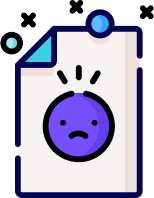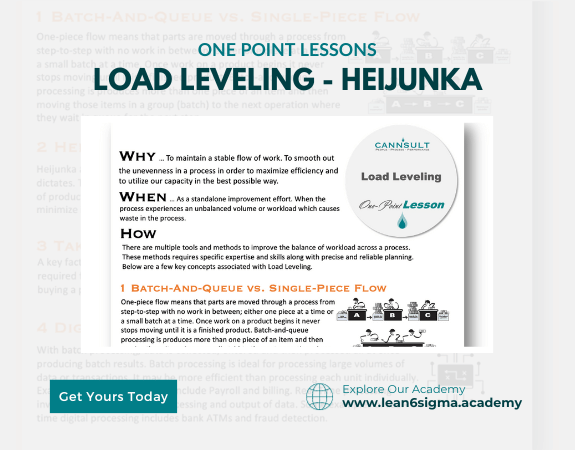Heijunka
Reduce Overproduction
Better responsiveness to Customer demand
Reduce Waste!
Load leveling
Improved Efficiencies
Smooth Workflow
Load-Leveling, or Heijunka in Japanese, is a production scheduling technique that smooths out production volumes to avoid peaks and valleys, improving efficiency, and reducing waste.
Description:
Load-Leveling, also known as Heijunka, is a critical concept in lean manufacturing. It aims to create a more balanced and efficient production schedule by avoiding sudden spikes or dips in production volume. This helps reduce waste and improves the flow of work.
Key Principles of Load-Leveling (Heijunka):
Steady Production: The goal is to maintain a consistent and steady rate of production, ideally matching the takt time (the time available to produce each unit to meet customer demand).
Flexibility: Heijunka allows for flexibility in production to meet changing customer demands while keeping the production flow smooth.
Smoothing Peaks and Valleys: Avoid producing too much of one product at one time (peaks) and too little at another time (valleys). Instead, aim for a more even distribution of production across products and time.
Steps to Implement Load-Leveling (Heijunka):
Analyze Customer Demand: Understand customer demand patterns, including variations, seasonality, and trends.
Create Product Families: Group similar products or parts into families based on production requirements, such as setup times and demand volumes.
Use a Production Schedule: Develop a production schedule that considers both customer demand and production capabilities.
Balance Production: Adjust the production schedule to smooth out production volumes. This may involve batching similar products together or staggering production runs.
Implement Pull Systems: Use pull systems like Kanban to initiate production only when customer demand signals the need.
Benefits of Load-Leveling (Heijunka):
Reduced overproduction and excess inventory
Improved production efficiency
Better responsiveness to customer demand changes
Smoother workflow and reduced waste
Enhanced resource utilization
Key Takeaway:
Load-Leveling, or Heijunka, is a production scheduling technique that aims to balance workloads and avoid production peaks and valleys. By maintaining a steady rate of production and responding to customer demand effectively, it contributes to increased efficiency and waste reduction.

0 Reviews
Riaan is a dynamic leader, coach, facilitator, Lean Six Sigma Master Black Belt with over 20 years of hands-on experience driving business results. Riaan is highly skilled and has worked across diverse industries internationally. With a degree in Chemical Engineering, Riaan started in the major breweries and bakeries in South Africa and was so dedicated to his work that he was often known to take his work home with him.
